Types of Gas Hoses for Boilers. Recommendations for Safe Connection
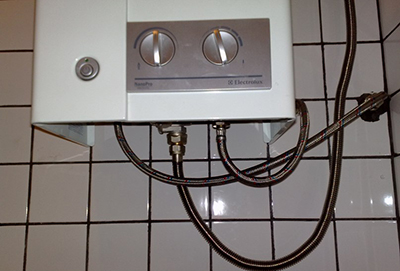
The gas heating boiler is connected to the main highway using a flexible sleeve.
Selecting and installing a boiler hose – a very responsible matter, because we are talking about gas.
An incorrect connection to the gas pipeline may result in explosion.
For supplying domestic gas, flexible gas hoses specially designed for this purpose are used. Using water hoses for this purpose is strictly prohibited.
What is a gas hose for boilers and why is it needed?
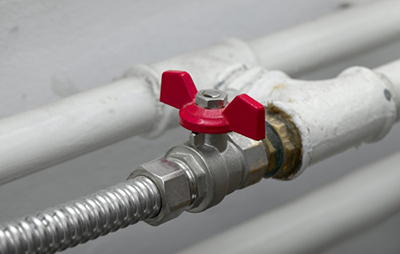
The gas hose is a flexible tube.
It can be made from different materials, but regardless of this, are usually marked with a characteristic yellow color.
A gas hose is used to connect a boiler or other household appliance to the gas main.
Previously, they used it for these purposes steel pipe, but the hose is much more convenient and aesthetically pleasing.
Varieties
In everyday life, only three types gas hoses:
- Rubberized fabric.
- Rubber reinforced.
- Bellows.
They are made from different materials and have different technical properties and service lives. Each of the three species Gas hoses have both advantages and disadvantages. The choice depends on the installation location and the specific case.
Rubber
Rubber sleeves reinforced with textile thread – the softest among all types of hoses. They are economical, easy to install and maintain. A wide selection of hoses of this type is presented in construction stores. You can easily choose a sleeve the required length and diameter.
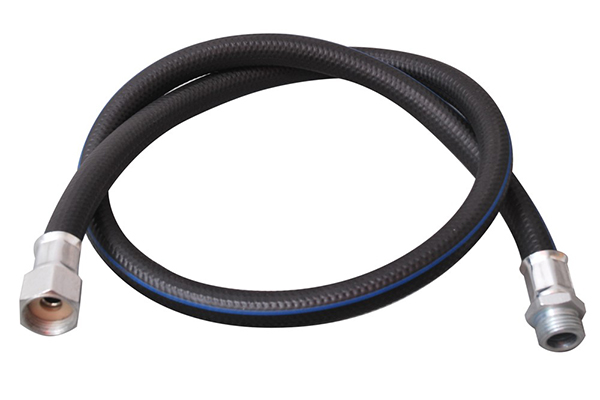
Photo 1. Rubber soft gas hose, black, economical, easy to connect.
A rubber gas hose is mainly used in summer cottages. This method of gas supply is the most affordable and easy to install, but also the most unsafe. Over time, the rubber cracks, which inevitably leads to gas leakage, so the use of this type of connection is acceptable only for gas cylinders of the private sector.
In addition, these hoses lack rigidity and are sensitive to temperature changes. It is recommended to replace this type of hose every two years, but in practice they are used much longer. Modern hoses with elastic components in the composition can serve up to 5 years.
Reinforced
Much more common are reinforced rubber hoses, which are similar to water supply hoses. They are braided with steel threads on the outside. Inside, they consist of a polymer material, although they are called rubber.
Reinforced hoses are also affordable and easy to use, but they banned in a number of European countriesOur gas workers also do not recommend using them or doing so in compliance with a number of rules.
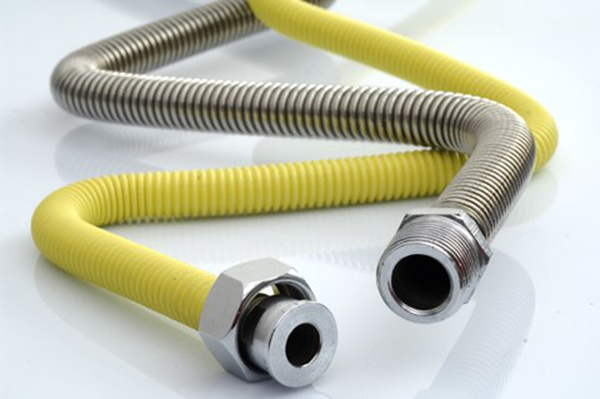
Photo 2. Two reinforced hoses made of polymer material, one covered with corrugated steel on top.
The polymer sleeve inside is destroyed in the same way as the rubber one. In addition, steel conducts electricity very well, so it is necessary to use dielectric gaskets during installation. When using metal-braided tubes, it is necessary to close the gas valves, this will extend the service life of the hoses. This type of sleeves is acceptable to use at temperatures up to +50 degrees.
Stainless steel bellows type
This is the only type of gas hose approved for domestic use. It is corrugated dense braid, resistant to high and low temperatures, high pressure and mechanical stress. There is single-layer and multi-layer bellows.
It is made of both metallic and non-metallic materials. The shell creates increased safety, it prevents damage from most types of impacts.
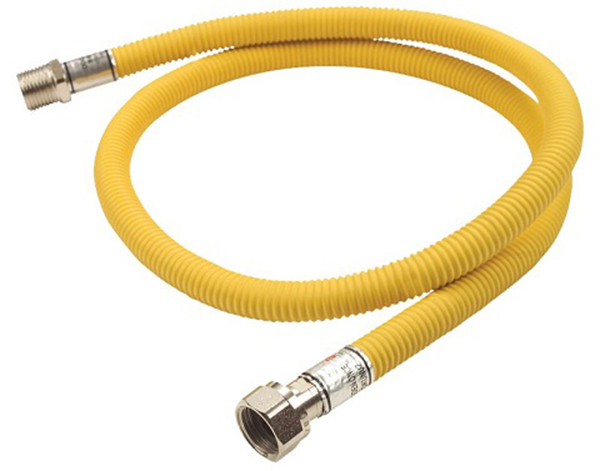
Photo 3. Yellow bellows gas hose, made of non-metallic material, coated with polymer.
This type of hose is made of stainless steel. Gas hoses are sold with and without insulation. The second type is covered with a polymer that does not conduct electricity. The hose is recommended with a diameter of at least 10 cm for uniform gas supply. Bellows hoses are much better in quality than the others.
Reference! The most reliable models are those with a polymer coating that protects against environmental influences. These gas hoses serve up to 30 years, they are safer, but also more expensive.
Advantages of bellows gas hoses:
- Long lasting service life (up to 30 years).

- They can withstand temperatures from -50 to +200 degrees.
- They can withstand pressure up to 6 atmospheres.
- Comply with GOST standards.
- Compatible with any fittings.
- Approved for use gas services.
- Protected from mechanical damage and aggressive environments.
- Protected from impacts electricity of 1 thousand V or more.
- There are no restrictions during use.
How to choose the right flexible gas tube?
It is safest to purchase a gas hose from a specialized store that has certificate of conformity of the state standard. It is best to opt for a bellows type of sleeve.
Important! Beware counterfeits of inadequate quality. There is a high probability of buying counterfeit goods on the market. This threatens that the sleeve will be made of thin cheap rubber, which will quickly fail. Only a professional can distinguish most fakes from the original.
To identify a fake, you need to carefully study the technical characteristics of the product, the passport and the certificate of conformity. You should not buy the product at a suspiciously low price.
Before purchasing, you need to take measurements, then add to the length 20%. You should not buy a gas hose with a reserve. Standard sizes 1–2 m. In everyday life it is usually used diameters 1/2 or 3/4 inches.
There is a sleeve with two types of fastenings: with two union nuts with internal thread (female-female) or with a nut on one end and a nipple on the other (mother-father). The thread is selected depending on the output on the device. It is preferable to choose welded structures, and not those where the nipple is connected to the corrugated pipe with glue.
Installation
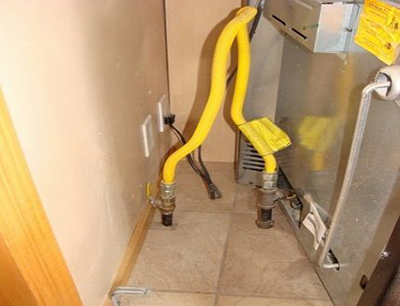
The most reliable way is to contact a professional who will ensure the correct connection and provide a guarantee. After all, everyone knows from childhood that It's dangerous to mess around with gas.
An unqualified connection to a gas pipeline can lead to an accident; the consequences of a domestic gas leak have all been seen in the news.
However, a modern gas hose allows you to connect the boiler to the main line yourself. Perform installation subject to safety precautions Any adult can do this.
The following rules must be followed in your work:
- The length of the eyeliner is selected taking into account the distance, to which the equipment is likely to be moved.
- The system is located in a place accessible for inspection.
- On the device There should be no other connections.
- The product cannot be painted. to avoid cracking of the material.
- Dimensions gas hoses must comply with GOST standards.
- Do not twist, bend or pull the sleeve.
- Do not solder or weld compound.
- Make a replacement hose to a new one in accordance with the recommendation manufacturer.
Connection to the gas pipeline
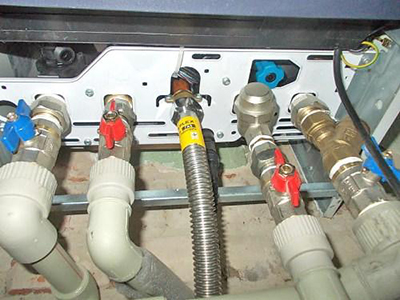
To install the gas hose to the riser you will need adjustable wrench, screwdriver, sealant, brush and soap solution.
First, it is necessary to prepare the room and shut off the gas supply to the network. Then the boiler is installed in the installation site and carefully leveled.
Each apartment has gas riser, which has branches with taps at the ends, this is called a release.
A seal is placed on the hose nipple and screwed into the tap on release. If the diameters do not match, then an adapter is needed, which is also sealed. The sleeve is connected to the boiler.
Then the system tested for leaks. To do this, apply a soap solution to the joints with a brush and slightly unscrew the valve. If the connection is not airtight, the solution will start to bubble, otherwise nothing will happen. If a leak is detected, it is necessary to shut off the gas and check the winding of the seal.
Lastly, the equipment is checked for operability and gas is supplied.
Attention! If you have any doubts, the best solution is to contact a specialist. The technician will connect the gas safely, reliably and in compliance with all regulations, and will also provide a guarantee for the correct operation of the system. for many years.
Useful video
The video explains what drawback a bellows hose has, which can cause serious consequences.
Why is it better to seek help from specialists?
Only the gas supply organization has the right to install gas equipment. It will be better if the master inspects the entire heating system and identifies the shortcomings immediately than This will lead to problems in the future.
Gas heating is a dangerous piece of equipment, so consulting a qualified specialist is a must. Negligence in matters related to gas, could lead to tragedy!







